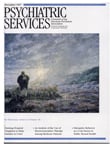Caregivers have always been confronted with a need to ease the pain and assuage the anxiety of those with terminal illness. For centuries nuns attending the dying in ancient European hospitals, and more recently staff of hospices created for those dying in this century, have provided what is needed to comfort the terminally ill, even if at times what ameliorates pain hastens death. Regrettably, in the past decade, what was considered humane and caring has been increasingly labeled as one extreme of "assisted suicide."
This unfortunate appellation has led some caregivers sensitive to the issue of the medical mission to preserve life, and the ethical dilemma associated with the provision of anything that may shorten it, to ignore the growing body of literature discussing what may be provided in the context of one's own religious, ethical, and legal beliefs. Psychologist Stephen Jamison, a past-president of the Mental Health Association of Marin County, California, offers such material in this interesting and easily readable book.
Although the author is not without his biases—he was a regional director of the Hemlock Society, a national right-to-die organization—he does discuss the contributions of many others who do not necessarily share his viewpoint. They include prominent suicidologists Edwin Shneidman and Herbert Hendin, ethicists Kathleen Foley and Daniel Callahan, and hospice pioneer Cicely Saunders.
Assisted Suicide is well written, is easy to understand, and covers topics ranging from the ethical debate about assisted suicide to explicit application of options available and questions we should ask ourselves before we make a decision either way. The book is intended to help caregivers work effectively with incurable or terminally ill individuals expressing a desire to die. It fulfills this mission by helping us to become aware of ethical concerns surrounding assisted dying and to understand more clearly our own thoughts and feelings about dying ourselves and about working with people who are dying. It provides ways to better grasp the meaning of patients' expressed desire to die and the full range of concerns they and we must deal with. Finally, it provides direction for listening to our patients and for increasing the quality of our interaction with terminally ill patients, regardless of whether they are considering a decision to die; it also provides a framework to help us feel comfortable about our own considered opinion regarding assisted dying and the confidence to maintain it consistently.
I enjoyed reading this book, including the open discussion of the controversy impacting patients' and caregivers' decisions at this sacred moment in life. My only criticism is that there is not greater discussion of how affective illness may confound an individual's thinking about the desire to die and how, after depression is treated psychopharmacologically and psychotherapeutically, many may wish to continue to live as long as they comfortably can, to be with those they love and put in order their life before they must complete the final transition.

